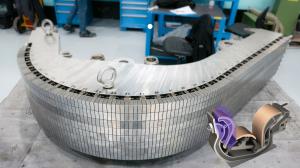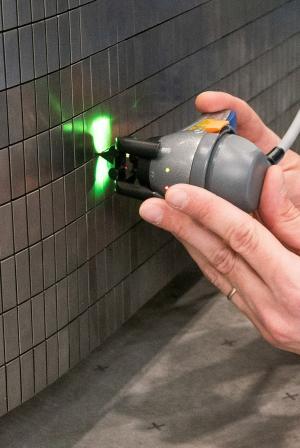The hottest stuff in ITER
The heat flux sustained by the targets of the ITER divertor will be higher still—by ten times—than that of a space vessel re-entering Earth's atmosphere. Meticulous prototyping and test campaigns are underway to prepare for the manufacturing of these highly technical components; last month, a milestone was reached in Europe in the development program for the inner vertical target.
In ITER, the hot plasma can only be maintained if waste gases and impurities are continually exhausted from the machine. The component in charge of the exhaust process is situated at the bottom of machine—composed of a supporting structure in stainless steel and three plasma-facing components, the divertor will face heat fluxes of 10-20 MW per square metre. The bombardment will be particularly intense for the vertical targets, which are positioned at the intersection of magnetic field lines.
Tungsten, a shiny, silvery-white refractory metal that has a high melting temperature (3400 °C), has been chosen as the armour material for the plasma-facing components and prototyping and testing phases are underway for the dome (Russia), the outer vertical target (Japan), and the inner vertical target (Europe) to ensure manufacturability and performance in line with challenging ITER specifications. The maximum expected temperature on the tungsten surface of the inner vertical target will be about 1000 °C in normal operating conditions and 2000 °C in off-normal conditions.
During a pre-qualification phase in Europe for the inner vertical target, multiple suppliers had fabricated and tested small-scale (~1/20th) mockups of the tungsten monoblocks mounted around cooling channels. As a follow-up step, pre-qualified manufacturers were invited to produce full-scale prototypes—half-tonne, 1.5-metre-long components that are made of a massive curved steel support structure armoured with 1,104 tungsten monoblocks actively cooled by pressurized water.
"This scale-one prototype demonstrates industry's ability to manufacture such a demanding piece—fulfilling the ITER requirements on line with nuclear standards, in particular in terms of welding techniques," says Frédéric Escourbiac, leader of the Divertor Section. "On top of this, the prototype respects the stringent tolerances imposed by the need to align the components in the machine perfectly. It's a great first step; we need now together with our Domestic Agency partners to deploy the effort to ensure a similar level of performance during series production.
Ansaldo Nucleare (Italy) is the first supplier to complete its prototype, in collaboration with its main subcontractors Ansaldo Energia, ENEA and Walter Tosto. The prototype will now be shipped to the Efremov Institute in Saint Petersburg for a series of thermal tests.
Read the full story on the European Domestic Agency website.



